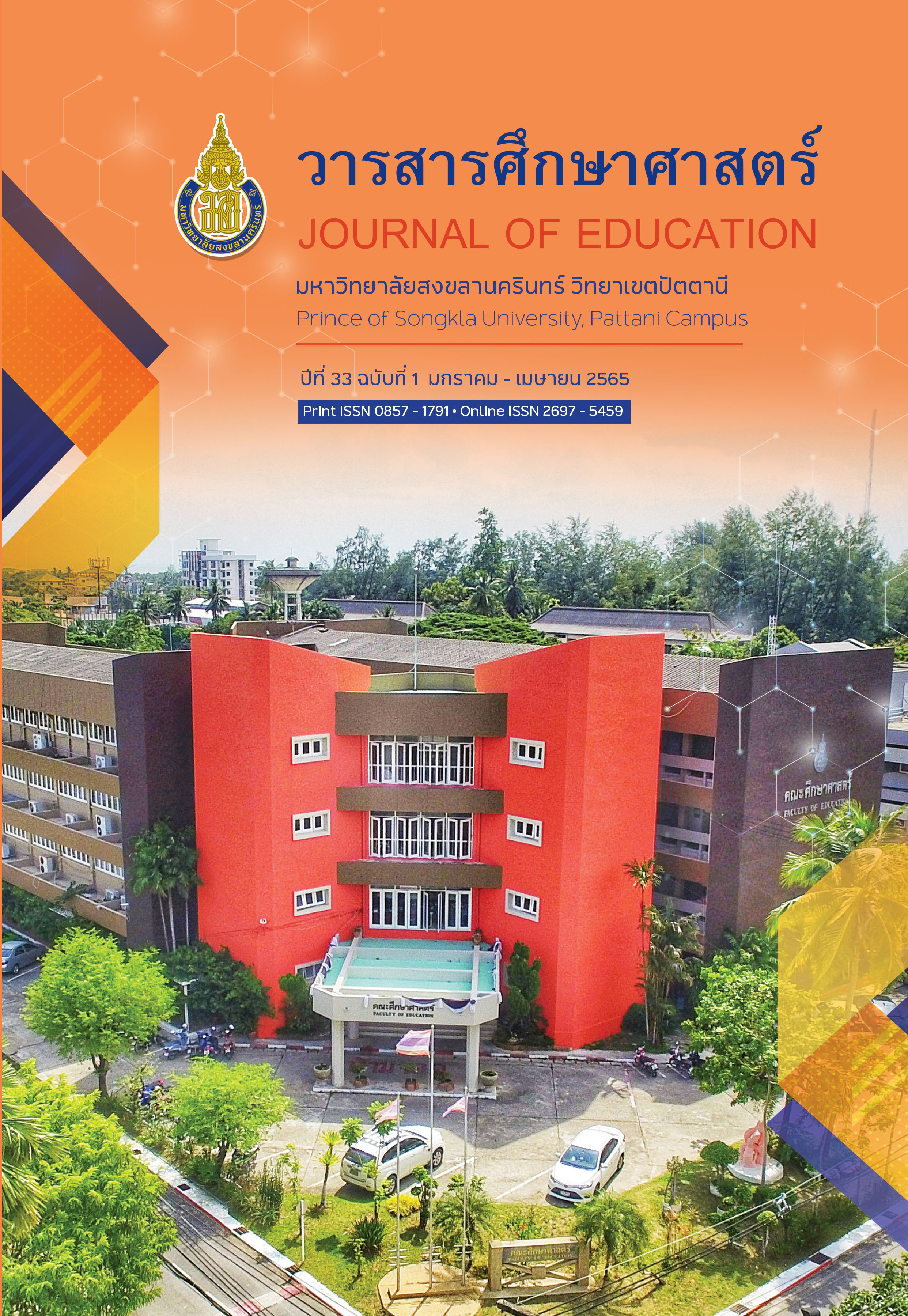การพัฒนาสมรรถนะครูคืนถิ่นภาคกลางตอนบนตามมาตรฐานวิชาชีพครู ของสำนักงานคณะกรรมการการอุดมศึกษา
Main Article Content
บทคัดย่อ
การวิจัยครั้งนี้มีวัตถุประสงค์เพื่อ 1) พัฒนาและหาประสิทธิภาพของรูปแบบการพัฒนาสมรรถนะวิชาชีพครูคืนถิ่นด้วยการเสริมสร้างประสบการณ์ในสถานศึกษา 2) ประเมินผลการใช้รูปแบบการพัฒนาสมรรถนะวิชาชีพครูคืนถิ่นด้วยการเสริมสร้างประสบการณ์ในสถานศึกษา และ3) นำเสนอแนวทางการพัฒนาสมรรถนะวิชาชีพครูคืนถิ่นด้วยการเสริมสร้างประสบการณ์ในสถานศึกษา ประชากร ได้แก่ ผู้ทรงคุณวุฒิและผู้เชี่ยวชาญ ผู้แทนสถานศึกษาหรือครูพี่เลี้ยง และครูคืนถิ่น จำนวน 217 คน กลุ่มตัวอย่าง ได้แก่ ครูคืนถิ่น จำนวน 137 คน กำหนดสัดส่วนของกลุ่มตัวอย่างโดยใช้ตารางของ เครจซี่และมอร์แกน เครื่องมือที่ใช้ในการวิจัย ได้แก่ 1) แบบประเมิน จำนวน 4 ฉบับ และ 2) แบบสอบถาม จำนวน 2 ฉบับ สถิติที่ใช้ในการวิเคราะห์ข้อมูล ได้แก่ ร้อยละ ค่าความถี่ ค่าเฉลี่ย ส่วนเบี่ยงเบนมาตรฐาน และการทดสอบที
ผลการวิจัยพบว่า 1) ได้รูปแบบการพัฒนาสมรรถนะวิชาชีพครูคืนถิ่นด้วยการเสริมสร้างประสบการณ์ในสถานศึกษา มีความเหมาะสมอยู่ในระดับมาก ( = 3.96, S.D. = 0.48) 2) ผลการใช้รูปแบบการพัฒนาสมรรถนะวิชาชีพครูคืนถิ่นด้วยการเสริมสร้างประสบการณ์ในสถานศึกษา หลังการพัฒนาสูงกว่าก่อนการพัฒนา อย่างมีนัยสำคัญทางสถิติที่ระดับ .05 และ3) ความคิดเห็นของผู้ทรงคุณวุฒิและผู้เชี่ยวชาญต่อแนวทางการพัฒนาสมรรถนะวิชาชีพครูคืนถิ่นด้วยการเสริมสร้างประสบการณ์ในสถานศึกษา มีความเหมาะสมอยู่ในระดับมากที่สุด (
= 4.69, S.D. = 0.73)
Article Details

อนุญาตภายใต้เงื่อนไข Creative Commons Attribution-NonCommercial 4.0 International License.
เอกสารอ้างอิง
Bloom, B. S. (1976). Human characteristic and school learning. New York: McGraw-Hill. Cavalier, R. (2005). Employer Surveys of Core Competencies and Employer Focus Groups Responses. Minnesota USA: The University of Minnesota Crookston Baccalaureate Level Graduates.
Chantakul, P. (2017). Model for Teacher Competency Development in Using Information Technology and Communicate to manage learning in the 21th century. Journal of Education Sciences Naresuan University, 19(3), 225-237.
Keegan, A., Ringhofer, C., & Huemann, M. (2018). Human resource management and project- based organizing: Fertile ground missed opportunities and prospects for closer connections. International Journal of Project Management, 36(1), 1-3.
Krejcie, R. V., & Morgan, D. W., (1970). Determining Sample Size for Research Activities. Educational and Psychological Measurement.
Noppakhun, A. (2018). Development of teacher competency in educational institutions under Nakhon Ratchasima Primary Educational Service Area Office. Community Research Journal, 12(3), 232-243.
OECD. (2012). Programmed for International Assessment. reviews of national policies for education. OECD Publishing Paris.
OECD. (2016). Education in Thailand: An OECD-UNESCO perspective, reviews of national policies for education. OECD Publishing Paris.
Office of the Basic Education Commission. (2017). Teacher Competency Assessment Manual Office of the Basic Education Commission. Bangkok.
Office of the Higher Education Commission. (2016). Teacher Production for Local Development Project (2016-2029). Bangkok.
Phongdechatrakul, T. (2017). Performance Development Using a Professional Learning Community Model of Teachers and Non-Educational Personnel Systems and informal education Chaiyaphum. Province Journal of Educational Administration Khon Kaen
University, 13(1), 113-121.
Saenjaiprom, S. (2018). Model for Competency Development of Teachers in the Management of Hygiene Learning For schools on the highlands. Chiang Mai Rajabhat Research Journal, 7(1), 51-63.
Sanghi, S. (2016). The handbook of competency mapping: understanding, designing and implementing competency models in organizations. India: SAGE publications.
Suknasit, A. (2017). Assessment of Needs for Teacher Competency Development in the 21st Century. Journal of Social Sciences Srinakharinwirot University, 20(8), 341-354.
Tantong, W. (2018). A model for teacher competency development in the 21st century under Chaiyaphum Primary Educational Service Area Office 3. Journal of Liberal Arts and Science, 5(3), 44-58.
Unenuam, W. (2016). Model for promoting teacher competency development. Under the area office Elementary education. Journal of Education Naresuan University, 18(3), 292-302.


